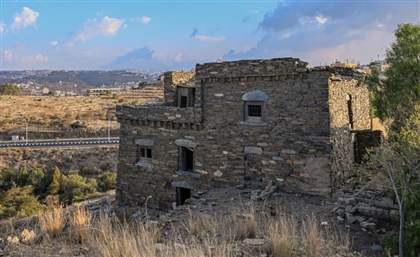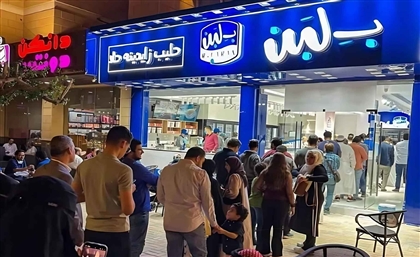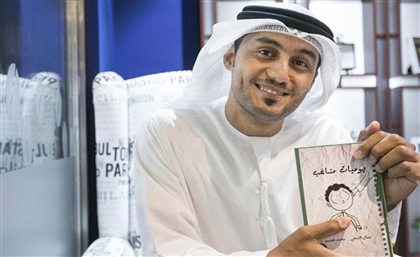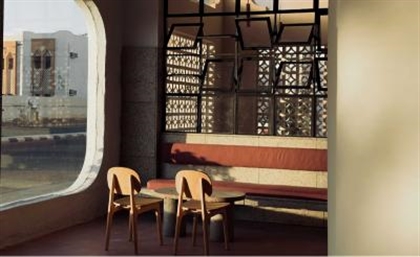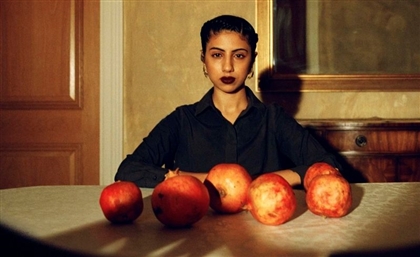RIBA Unveils Shortlist for First-Ever RIBA Middle East Awards
Spanning Bahrain, Qatar, Saudi Arabia and the UAE, the shortlist brings together 15 groundbreaking projects by regional and international practices.
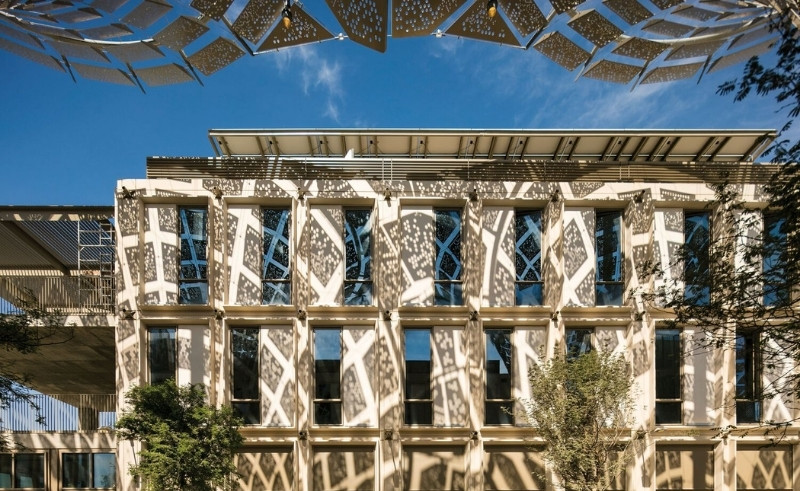
The Royal Institute of British Architects (RIBA) has unveiled the shortlist for the inaugural Middle East Awards, recognising works that are reshaping the built environment across the Gulf. From adaptive reuse to new civic and cultural landmarks, the 15 finalists demonstrate how design is addressing climate, ecology, heritage and community with both ambition and sensitivity. Spanning Bahrain, Qatar, Saudi Arabia and the United Arab Emirates, the shortlist brings together regional and international practices.
Al Dana Amphitheatre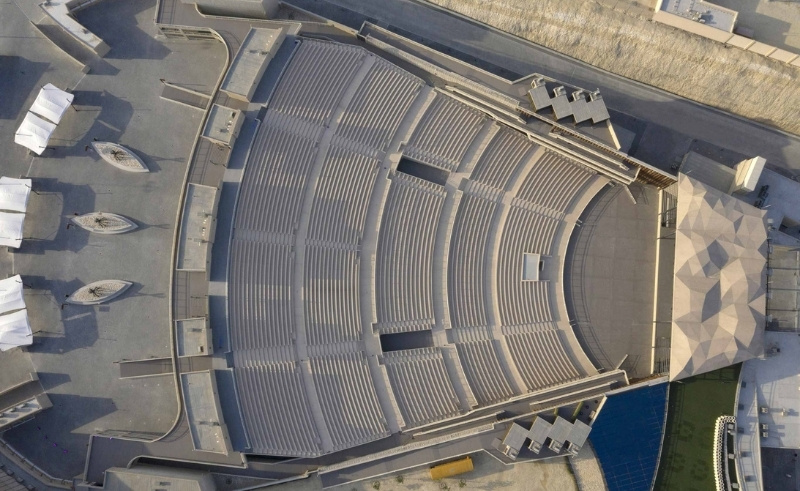 Set into Bahrain’s desert landscape, S/L Architects designed the Al Dana Amphitheatre as a performance venue embedded within a dramatic quarry site. The open-air arena, shortlisted in the RIBA Member category, blends with the surrounding rock formations, creating a striking cultural landmark. With a capacity for 10,000 spectators, the venue supports a broad program of concerts and events while highlighting the natural beauty of its site.
Set into Bahrain’s desert landscape, S/L Architects designed the Al Dana Amphitheatre as a performance venue embedded within a dramatic quarry site. The open-air arena, shortlisted in the RIBA Member category, blends with the surrounding rock formations, creating a striking cultural landmark. With a capacity for 10,000 spectators, the venue supports a broad program of concerts and events while highlighting the natural beauty of its site.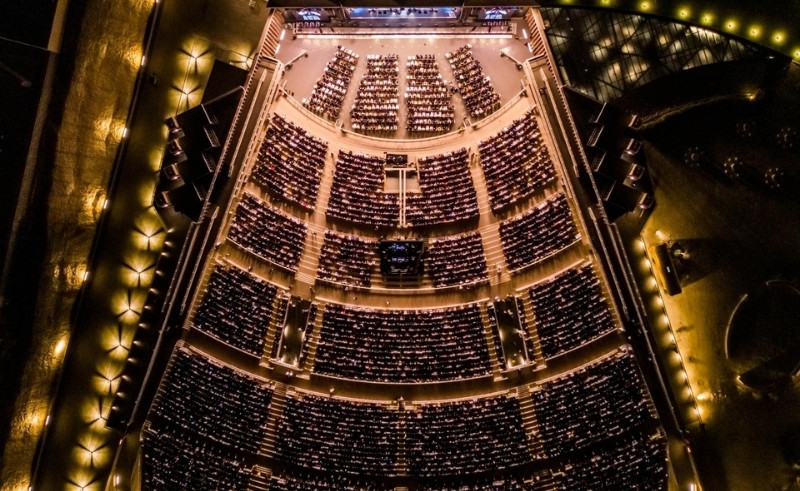
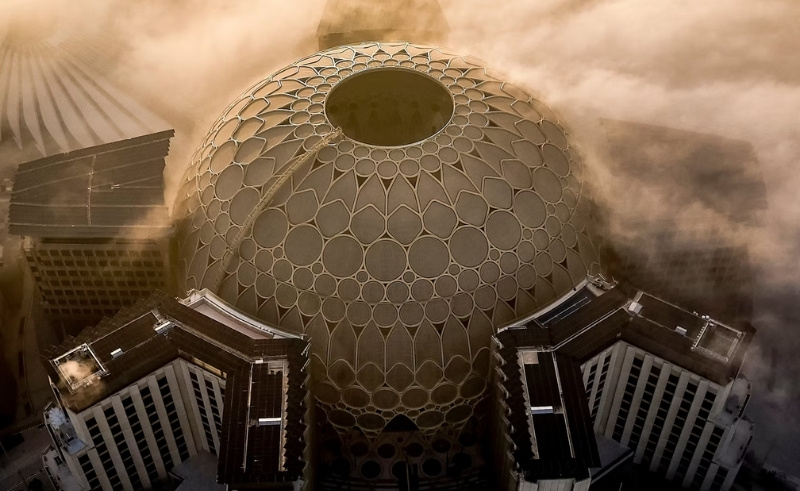 At the heart of Expo 2020 Dubai, Adrian Smith + Gordon Gill Architecture created Al Wasl Plaza, a vast domed trellis structure that now serves as a year-round civic space. Recognised in the Design for Living category, the plaza is enclosed by gardens, fountains and shaded walkways, hosting cultural events beneath its 360-degree projection dome. Designed as both spectacle and gathering place, it remains a permanent centrepiece of Expo City Dubai.
At the heart of Expo 2020 Dubai, Adrian Smith + Gordon Gill Architecture created Al Wasl Plaza, a vast domed trellis structure that now serves as a year-round civic space. Recognised in the Design for Living category, the plaza is enclosed by gardens, fountains and shaded walkways, hosting cultural events beneath its 360-degree projection dome. Designed as both spectacle and gathering place, it remains a permanent centrepiece of Expo City Dubai.-d1c52ae3-8ffa-4221-a515-8bed1282ad27.jpg) Al-Mujadilah Center and Mosque for Women
Al-Mujadilah Center and Mosque for Women-19162fa0-d44b-4e74-a51a-ebf081608e71.jpg) Commissioned by Her Highness Sheikha Moza bint Nasser and designed by Diller Scofidio + Renfro, the Al-Mujadilah Center and Mosque for Women in Doha offers a spiritual and civic anchor dedicated to women. Nominated for Social Architecture, the design integrates worship, education and community spaces in a contemporary architectural language, expanding access to religious and cultural life through inclusive and progressive programming.
Commissioned by Her Highness Sheikha Moza bint Nasser and designed by Diller Scofidio + Renfro, the Al-Mujadilah Center and Mosque for Women in Doha offers a spiritual and civic anchor dedicated to women. Nominated for Social Architecture, the design integrates worship, education and community spaces in a contemporary architectural language, expanding access to religious and cultural life through inclusive and progressive programming.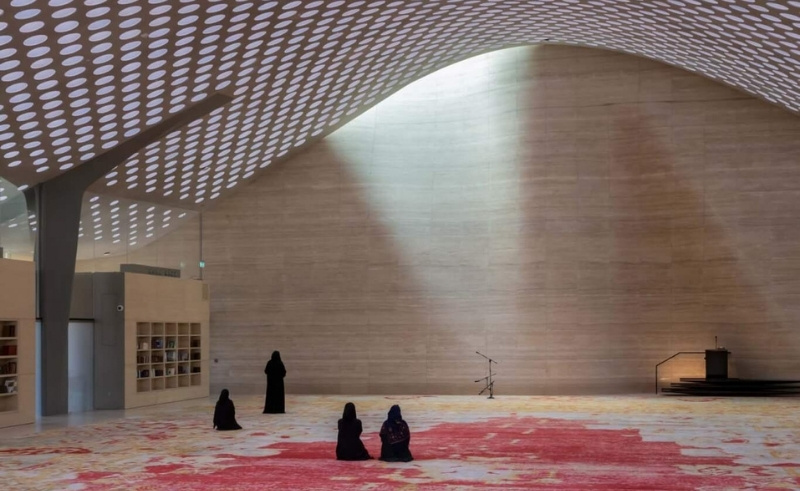 Buhais Geology Park Interpretive Centre
Buhais Geology Park Interpretive Centre-ac2b750a-b247-4a97-9720-a5af961cfedb.jpg) Located in the desert interior of Sharjah, Hopkins Architects shaped the Buhais Geology Park into a cluster of pods inspired by fossilised sea urchins. Shortlisted in the RIBA Member category, the centre introduces visitors to millions of years of geological history while blending into its rugged surroundings. Elevated structures minimise disruption to the terrain, offering shaded educational spaces and panoramic desert views.
Located in the desert interior of Sharjah, Hopkins Architects shaped the Buhais Geology Park into a cluster of pods inspired by fossilised sea urchins. Shortlisted in the RIBA Member category, the centre introduces visitors to millions of years of geological history while blending into its rugged surroundings. Elevated structures minimise disruption to the terrain, offering shaded educational spaces and panoramic desert views.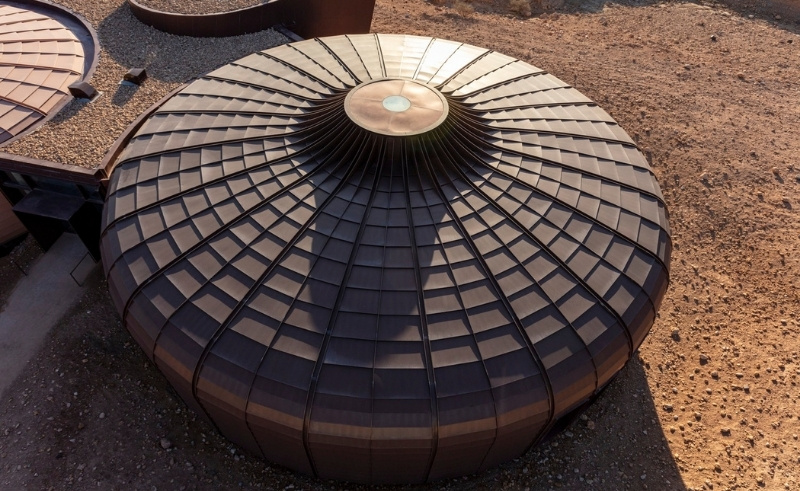 Expo 2020 Thematic Districts
Expo 2020 Thematic Districts-9419dd9b-c0e8-45ea-b363-424a0a4a60d9.jpg) For Expo 2020 Dubai, Hopkins Architects reinterpreted the traditional Arab city through the Thematic Districts. Recognised in the RIBA Member category, networks of shaded streets, courtyards and colonnades form a pedestrian-friendly urban fabric resilient to the desert climate. Though initially conceived for a temporary world fair, the districts were built for permanence and now anchor Expo City Dubai’s civic life.
For Expo 2020 Dubai, Hopkins Architects reinterpreted the traditional Arab city through the Thematic Districts. Recognised in the RIBA Member category, networks of shaded streets, courtyards and colonnades form a pedestrian-friendly urban fabric resilient to the desert climate. Though initially conceived for a temporary world fair, the districts were built for permanence and now anchor Expo City Dubai’s civic life. Jafar Centre, Dubai College
Jafar Centre, Dubai College-e90d423c-7fbf-426c-821e-c13998c0c3ef.jpg) Godwin Austen Johnson designed the Jafar Centre for Dubai College to emphasise sustainability and resilience in education. Nominated in the Sustainability and Resilience category, the project incorporates shaded courtyards, natural ventilation and energy-efficient systems while fostering flexible learning environments. Set within landscaped grounds, the building provides both a practical teaching space and an architectural statement about sustainable urban growth.
Godwin Austen Johnson designed the Jafar Centre for Dubai College to emphasise sustainability and resilience in education. Nominated in the Sustainability and Resilience category, the project incorporates shaded courtyards, natural ventilation and energy-efficient systems while fostering flexible learning environments. Set within landscaped grounds, the building provides both a practical teaching space and an architectural statement about sustainable urban growth.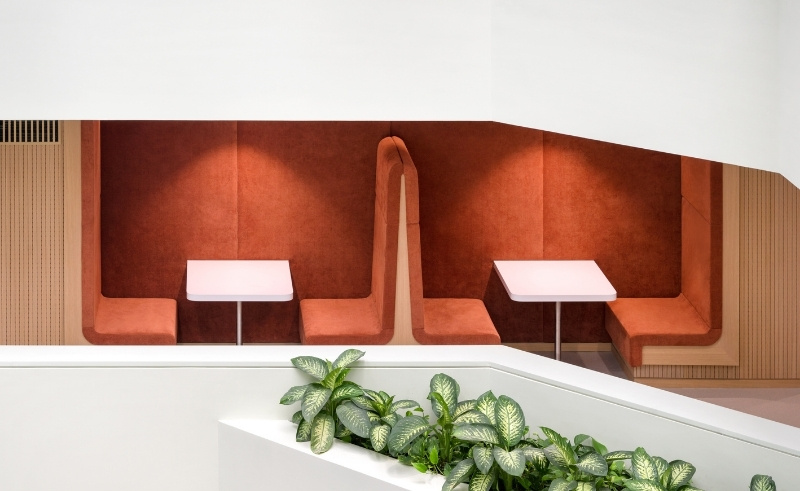 Khor Kalba Turtle and Wildlife Sanctuary
Khor Kalba Turtle and Wildlife Sanctuary-2496a242-34e0-4657-90bf-4a1db3ba123a.jpg) On the UAE’s east coast, Hopkins Architects designed the Khor Kalba Turtle and Wildlife Sanctuary within one of the Gulf’s most biodiverse reserves. Shortlisted in the RIBA Member category, a cluster of prefabricated pods provides exhibition, education and veterinary facilities for rehabilitating turtles and supporting endangered species. Inspired by marine forms, the sanctuary integrates research and conservation with public engagement, overlooking mangroves and mountain landscapes.
On the UAE’s east coast, Hopkins Architects designed the Khor Kalba Turtle and Wildlife Sanctuary within one of the Gulf’s most biodiverse reserves. Shortlisted in the RIBA Member category, a cluster of prefabricated pods provides exhibition, education and veterinary facilities for rehabilitating turtles and supporting endangered species. Inspired by marine forms, the sanctuary integrates research and conservation with public engagement, overlooking mangroves and mountain landscapes.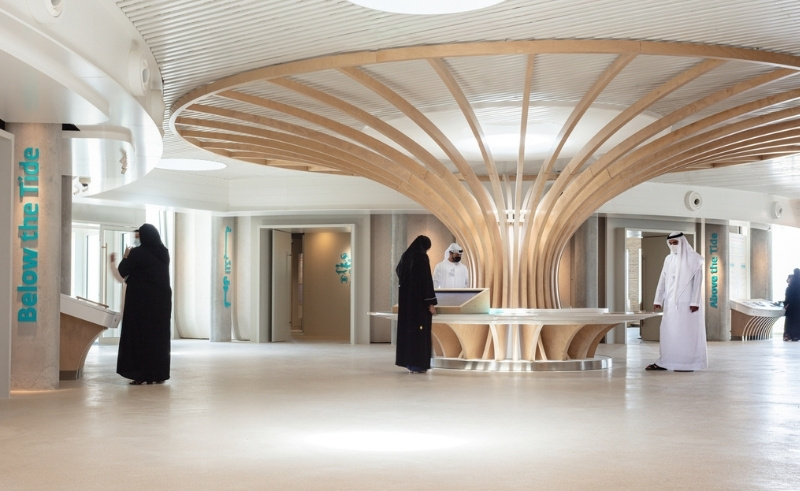 King Salman Park
King Salman Park-7bc68179-1495-4902-838a-8bbf1980f24f.jpg) In Riyadh, Gerber Architekten, working with Buro Happold and Setec, is leading the transformation of a former airport into King Salman Park, envisioned as one of the world’s largest urban parks. Recognised in the Future Projects category, the scheme combines museums, theatres, gardens and water features with vast new green landscapes. Designed as both ecological experiment and civic amenity, it signals Saudi Arabia’s ambition to green the desert and reshape urban life.
In Riyadh, Gerber Architekten, working with Buro Happold and Setec, is leading the transformation of a former airport into King Salman Park, envisioned as one of the world’s largest urban parks. Recognised in the Future Projects category, the scheme combines museums, theatres, gardens and water features with vast new green landscapes. Designed as both ecological experiment and civic amenity, it signals Saudi Arabia’s ambition to green the desert and reshape urban life.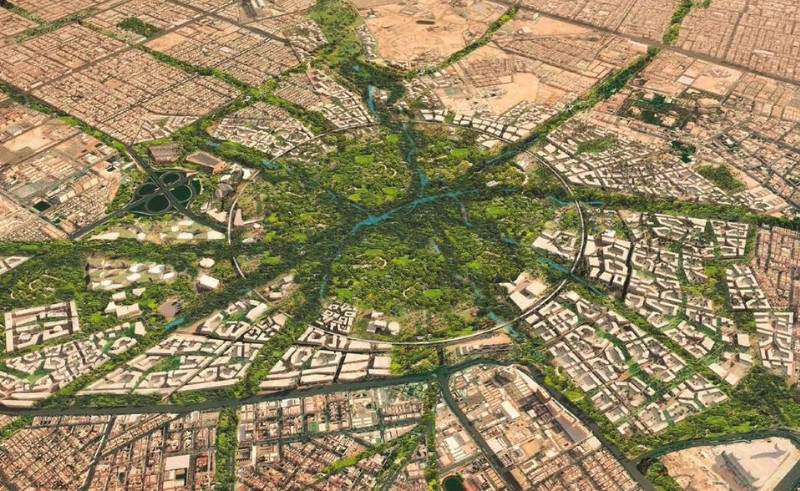 Singapore Pavilion, World Expo 2020
Singapore Pavilion, World Expo 2020-a20674b3-100f-4f56-ae5c-2ac4b172b98c.jpg) WOHA Architects, in collaboration with Salad Dressing, designed the Singapore Pavilion at Expo 2020 Dubai to embody the city-state’s “Nature. Nurture. Future” vision. Shortlisted in the Temporary Architecture category, layered tropical gardens, vertical walls and mangrove landscapes created a self-sustaining ecosystem within the desert. Combining solar desalination, smart irrigation and robotic plant care, the pavilion highlighted Singapore’s model of integrating greenery, technology and culture in dense urban settings.
WOHA Architects, in collaboration with Salad Dressing, designed the Singapore Pavilion at Expo 2020 Dubai to embody the city-state’s “Nature. Nurture. Future” vision. Shortlisted in the Temporary Architecture category, layered tropical gardens, vertical walls and mangrove landscapes created a self-sustaining ecosystem within the desert. Combining solar desalination, smart irrigation and robotic plant care, the pavilion highlighted Singapore’s model of integrating greenery, technology and culture in dense urban settings.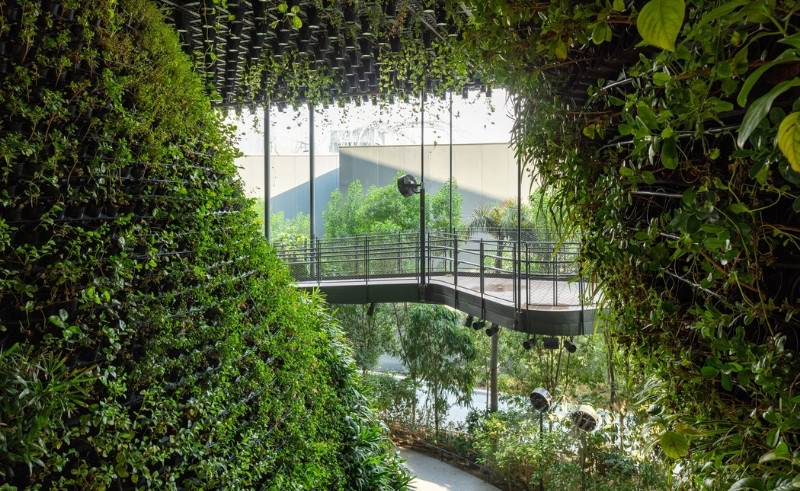 Terra - The Sustainability Pavilion Expo 2020 Dubai
Terra - The Sustainability Pavilion Expo 2020 Dubai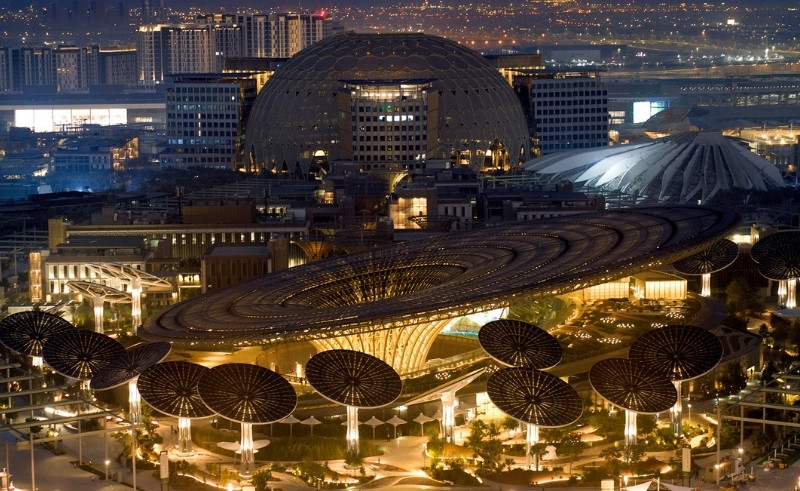 As one of Expo 2020 Dubai’s legacy buildings, Grimshaw, working with Desert INK and Buro Happold, designed Terra – The Sustainability Pavilion as both exhibition hall and future science centre. Nominated in the Sustainability and Resilience category, a vast solar canopy and surrounding “Energy Trees” generate renewable power, while water-harvesting systems sustain the building and landscape. With immersive exhibitions created by Thinc Design and Eden Project, the pavilion demonstrates sustainable architecture in arid climates and continues as a research hub.
As one of Expo 2020 Dubai’s legacy buildings, Grimshaw, working with Desert INK and Buro Happold, designed Terra – The Sustainability Pavilion as both exhibition hall and future science centre. Nominated in the Sustainability and Resilience category, a vast solar canopy and surrounding “Energy Trees” generate renewable power, while water-harvesting systems sustain the building and landscape. With immersive exhibitions created by Thinc Design and Eden Project, the pavilion demonstrates sustainable architecture in arid climates and continues as a research hub.-6a3f8646-e90f-4a7e-842a-1ae4b08a3609.jpg) The Fold
The Fold-bd9236b4-d802-48eb-9143-d9d6617fce94.jpg) In Dubai’s Jumeirah district, tkdp created The Fold, a residential development of 28 contemporary villas. Shortlisted in the Design for Living category, the architecture emphasises sculptural forms, privacy and integration with landscape, offering modern living that balances elegance with sustainable design. Its bold geometry sets a new standard for community-focused luxury housing.
In Dubai’s Jumeirah district, tkdp created The Fold, a residential development of 28 contemporary villas. Shortlisted in the Design for Living category, the architecture emphasises sculptural forms, privacy and integration with landscape, offering modern living that balances elegance with sustainable design. Its bold geometry sets a new standard for community-focused luxury housing.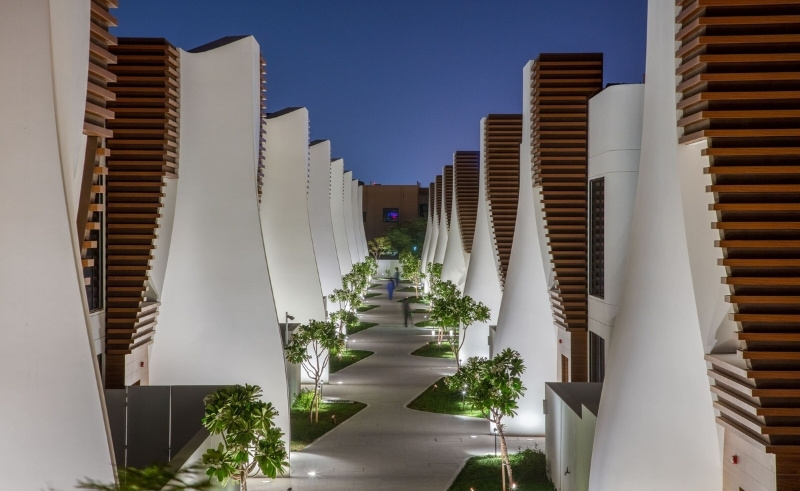 The H Residence
The H Residence-9488e384-1d63-4f69-a05e-dfe09a152c52.jpg) tkdp designed The H Residence in Jumeirah as a mixed-use development combining residences, retail and public space. Recognised in the Design for Living category, the project is anchored by a sloping central garden plaza, integrating townhouses, apartments and F&B outlets with shaded communal areas. A dramatic sky bridge spans the two wings, topped with an infinity pool overlooking Dubai’s skyline, reinforcing the building’s role as both private retreat and community hub.
tkdp designed The H Residence in Jumeirah as a mixed-use development combining residences, retail and public space. Recognised in the Design for Living category, the project is anchored by a sloping central garden plaza, integrating townhouses, apartments and F&B outlets with shaded communal areas. A dramatic sky bridge spans the two wings, topped with an infinity pool overlooking Dubai’s skyline, reinforcing the building’s role as both private retreat and community hub.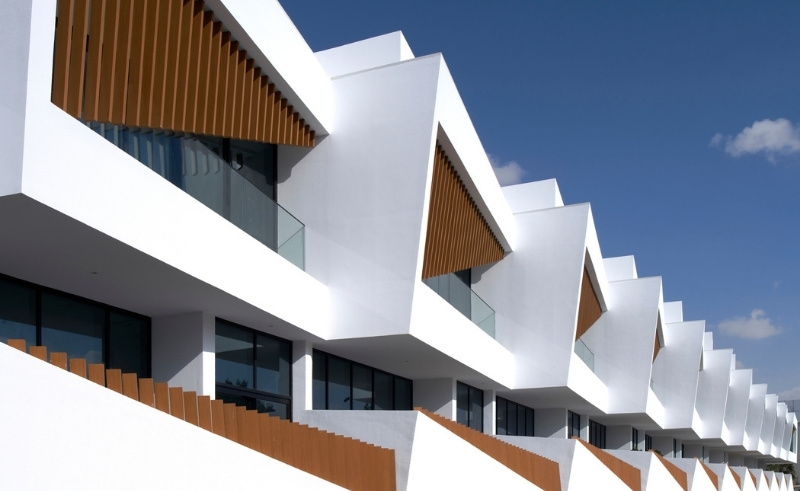 The Serai Wing
The Serai Wing-9a02e152-57f3-4505-a5c0-70934e74aeb0.jpg) In Sharjah, ANARCHITECT transformed a cluster of 1950s merchant houses into The Serai Wing of the Chedi Al Bait hotel. Nominated in the Adaptive Reuse category, the project balances preservation of Emirati heritage with contemporary hospitality needs. Minimalist interventions in stone and metal complement historic textures, while a new suite and central courtyard pool create a tranquil, contextually rooted guest experience.
In Sharjah, ANARCHITECT transformed a cluster of 1950s merchant houses into The Serai Wing of the Chedi Al Bait hotel. Nominated in the Adaptive Reuse category, the project balances preservation of Emirati heritage with contemporary hospitality needs. Minimalist interventions in stone and metal complement historic textures, while a new suite and central courtyard pool create a tranquil, contextually rooted guest experience.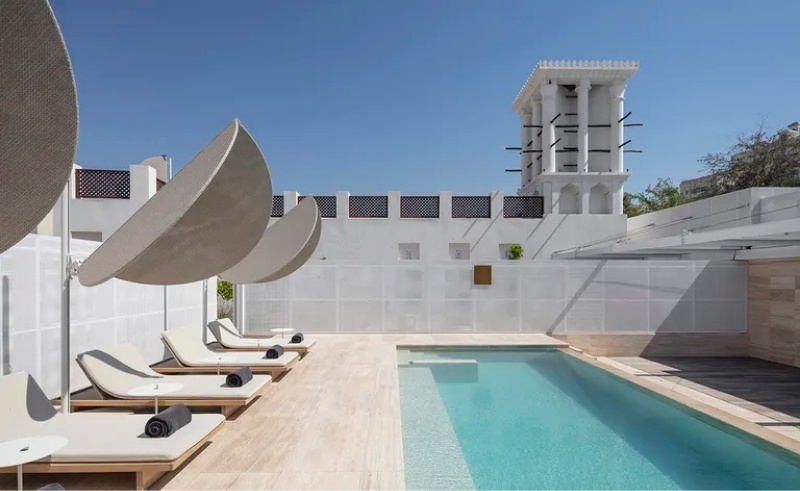 Wadi Safar Experience Center
Wadi Safar Experience Center
Dar Al Omran, led by Rasem Badran, designed the Wadi Safar Experience Center outside Riyadh as a contemporary interpretation of Najdi architecture. Shortlisted in the Social Architecture category, the centre is nestled within an 8,000-square-metre desert oasis and integrates traditional forms with modern luxury, offering views over a golf course, polo club and hotels. It serves as both cultural showcase and gateway to the larger Wadi Safar development.-804ef616-23d2-48d7-a0e5-08ee02cce54d.jpg) World Food Waste Teahouse: Arabi-an
World Food Waste Teahouse: Arabi-an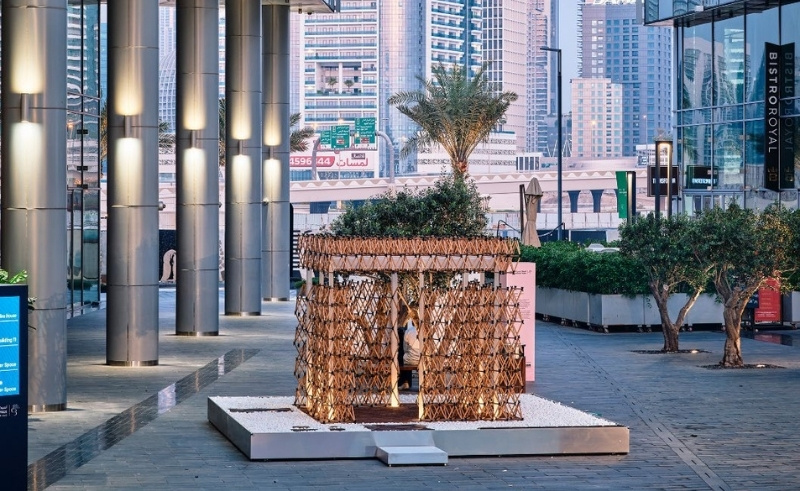 At Expo 2020 Dubai, Mitsubishi Jisho Design presented the Arabi-an World Food Waste Teahouse, an experimental pavilion exploring circular design.
At Expo 2020 Dubai, Mitsubishi Jisho Design presented the Arabi-an World Food Waste Teahouse, an experimental pavilion exploring circular design.
-83ed881c-ed78-4d50-b6d4-cd2af9ef2158.jpg)
Shortlisted in the Temporary Architecture category, the pavilion was built using compressed food waste such as tea leaves and dried fruit, alongside lightweight recyclable materials. Designed for disassembly and reuse, it doubled as a contemporary space for tea rituals and a statement on resource-conscious architecture.








